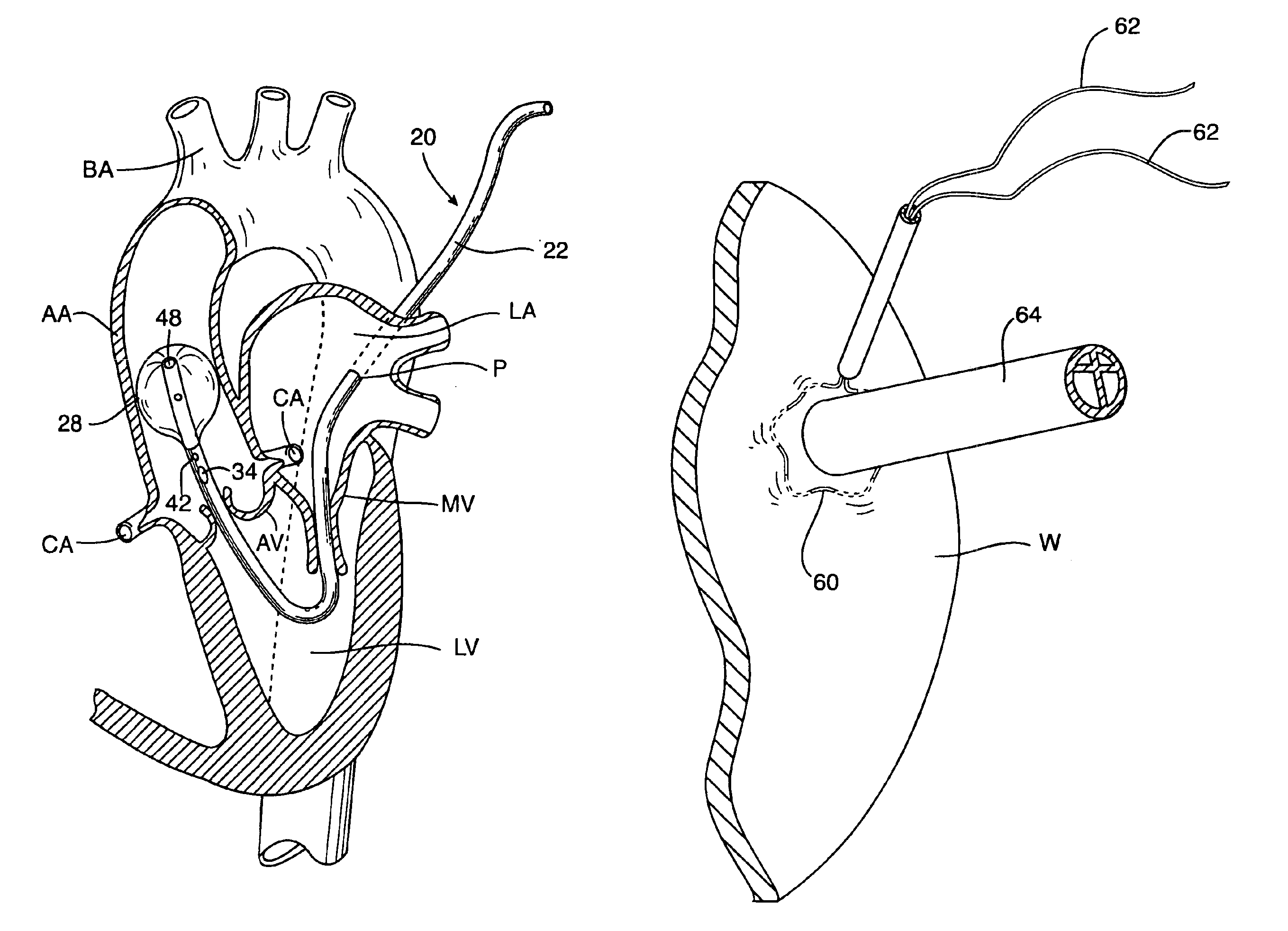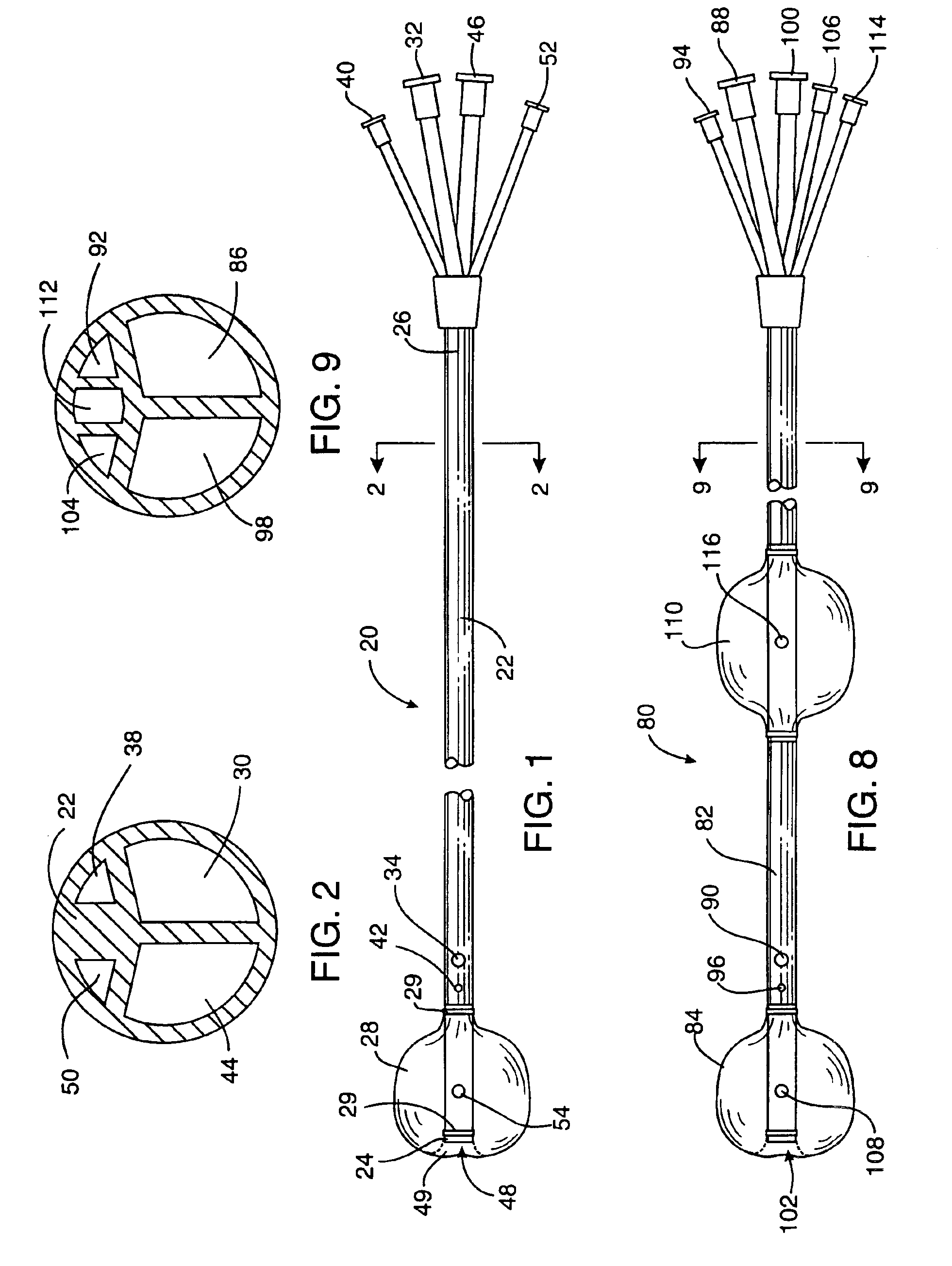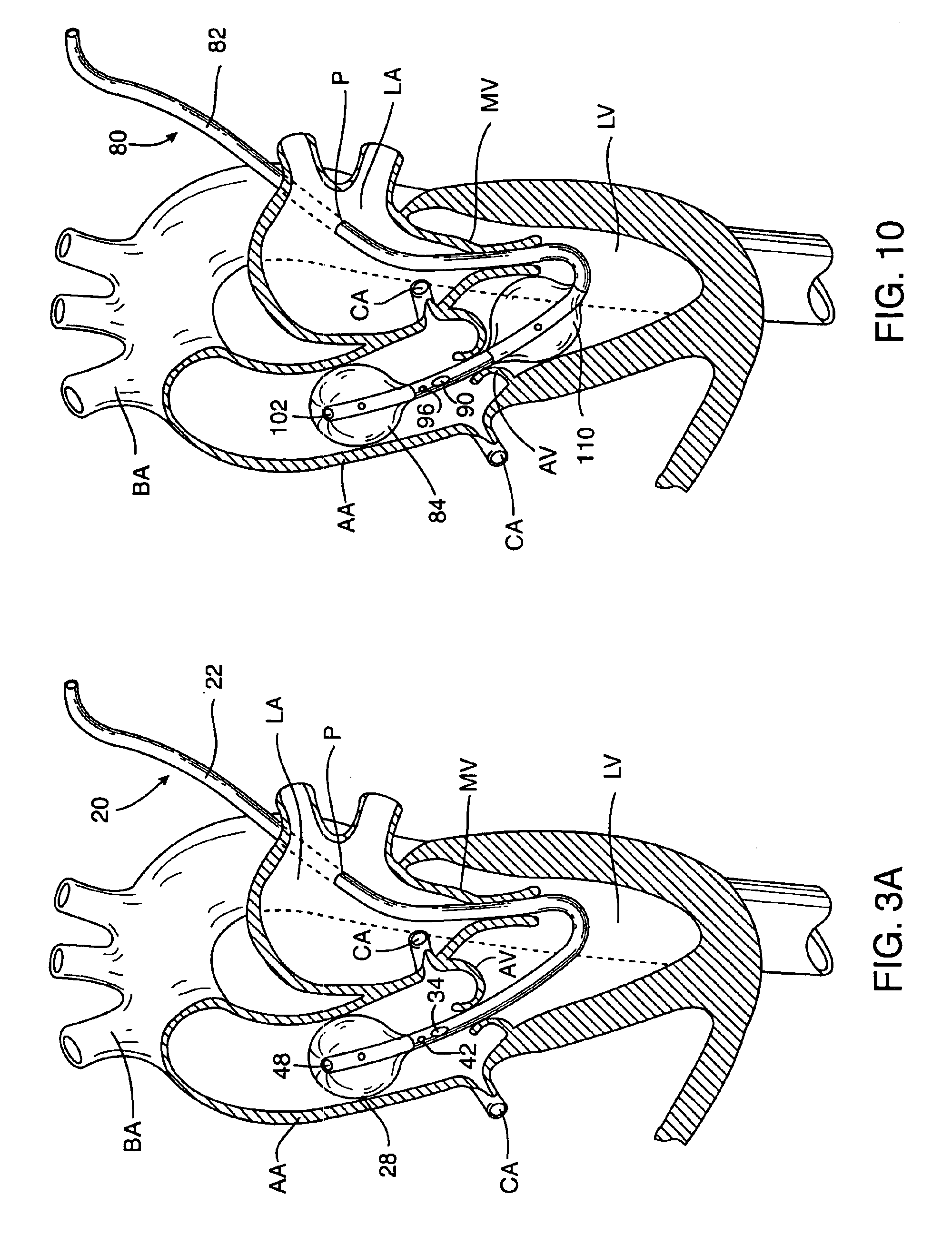Antegrade cardioplegia catheter and method
a cardioplegia and catheter technology, applied in the field of medical procedures, can solve the problems of long recovery time, high degree of pain and trauma, and the inability to meet the needs of patients, and achieve the effect of facilitating endovascular occlusion
- Summary
- Abstract
- Description
- Claims
- Application Information
AI Technical Summary
Benefits of technology
Problems solved by technology
Method used
Image
Examples
first embodiment
[0040]Referring to FIG. 1, a cardioplegia catheter according to the invention will be described. Cardioplegia catheter 20 has a shaft 22 having a distal end 24 and a proximal end 26. An occlusion balloon 28 is attached to shaft 22 near distal end 24 by adhesive bonding or other known technique. One or more radiopaque bands or markers 29 are provided on shaft 22 adjacent occlusion balloon 28 to permit fluoroscopic imaging of the catheter within the aorta.
[0041]Shaft 22 has a plurality of lumens, as shown in FIG. 2. A first lumen 30 extends from a first port 32 at proximal end 26 to a first opening 34 proximal to occlusion balloon 28. A second lumen 38 extends from a second port 40 at proximal end 26 to a second opening 42 proximal to occlusion balloon 28. The positions of first and second openings 34, 42 are selected such that the openings will be disposed within the ascending aorta downstream of the aortic valve when occlusion balloon 28 is disposed between the brachiocephalic arter...
second embodiment
[0059]a cardioplegia catheter 80 according to the invention is illustrated in FIGS. 8-10. Cardioplegia catheter 80 is in many respects similar to cardioplegia catheter 20 of FIGS. 1-7, having a flexible shaft 82, an occlusion member 84 at the distal end of shaft 82, a first lumen 86 extending from a first port 88 to a first opening 90 proximal to occlusion member 94, a second lumen 92 extending from a second port 94 to second opening 96 proximal to occlusion member 84, and a third lumen 98 extending from a third port 100 to a third opening 102 distal to occlusion member 84. Occlusion member 84 is preferably an occlusion balloon, inflated by means of inflation fluid delivered through an inflation lumen 104 extending from an inflation port 106 to an inflation opening 108 within the occlusion balloon.
[0060]Unlike the previous embodiment, cardioplegia catheter 80 further includes a ventricular balloon 110 spaced proximally from occlusion member 84 and first and second openings 90,94. Th...
PUM
 Login to View More
Login to View More Abstract
Description
Claims
Application Information
 Login to View More
Login to View More - R&D
- Intellectual Property
- Life Sciences
- Materials
- Tech Scout
- Unparalleled Data Quality
- Higher Quality Content
- 60% Fewer Hallucinations
Browse by: Latest US Patents, China's latest patents, Technical Efficacy Thesaurus, Application Domain, Technology Topic, Popular Technical Reports.
© 2025 PatSnap. All rights reserved.Legal|Privacy policy|Modern Slavery Act Transparency Statement|Sitemap|About US| Contact US: help@patsnap.com



